In Rank Your Records , we talk to artists who have amassed substantial discographies over the years and ask them to rate their releases in order of personal preference.Now 25 years into their career, Norwegian metal legends Enslaved have earned a strong reputation for their arc of constant growth and exploration. From their earliest output, 1994's Vikingligr Veldi to 2015's In Times, the band has a tendency to create perennially enjoyable music that always feels familiar yet seldom approaches an idea in the same way twice. As a nod to this, the band is preparing to release a vinyl edition of The Sleeping Gods – Thorn, a collection of two EPs originally released in limited runs in 2011.
Advertisement
As part of the anniversary celebrations, Enslaved is collaborating with Noisey to host a small Norwegian takeover on December 9 and 10 as part of New York By Norse. This bold move makes perfect sense as part of the band's legacy as inventive and daring artists. As a group of innovators and lovers of music themselves (Enslaved is known to spend much of its free time visiting record stores on tour), it's only appropriate that we bring in founding member Ivar Bjørnson to share his reflections on all 13 Enslaved albums.Noisey: This is a surprisingly brief album. Was this restraint intentional?
Ivar Bjørnson: I don't think it was necessarily intentional to try to keep things brief. I think it was a result of the style. We were trying to go into a bit more of a pure extreme metal direction. There was too much emphasis on the black metal influences. There's good songs, but I feel like the style itself didn't necessarily fit us as a band. Normally, I feel like we've said a lot with an album. This one, I feel we gave ourselves too little space to express it.It's the most purely aggressive album.
It's an extremely valuable album, though, because it helped us determine where to go after that. Sometimes it's an advantage, sometimes it's a disadvantage, but it did influence our direction.It's also the only album with the whole band on the cover.
It was sort of a follow-up on Eld with [vocalist/bassist] Grutle on the front. He thought it was ridiculous because he's coy. Everybody else thinks it's pretty iconic. We liked the idea and wanted to do something in that vein with our new lineup so we put everybody on the cover.
13. Blodhemn (1998)
Ivar Bjørnson: I don't think it was necessarily intentional to try to keep things brief. I think it was a result of the style. We were trying to go into a bit more of a pure extreme metal direction. There was too much emphasis on the black metal influences. There's good songs, but I feel like the style itself didn't necessarily fit us as a band. Normally, I feel like we've said a lot with an album. This one, I feel we gave ourselves too little space to express it.It's the most purely aggressive album.
It's an extremely valuable album, though, because it helped us determine where to go after that. Sometimes it's an advantage, sometimes it's a disadvantage, but it did influence our direction.It's also the only album with the whole band on the cover.
It was sort of a follow-up on Eld with [vocalist/bassist] Grutle on the front. He thought it was ridiculous because he's coy. Everybody else thinks it's pretty iconic. We liked the idea and wanted to do something in that vein with our new lineup so we put everybody on the cover.
Advertisement
12. Mardraum – Beyond the Within (2000)
Yeah, kinda. We always said we'd go with the flow and whatever seems natural. With this one, we had a really concrete discussion. We decided we could either continue within the framework of the first four albums and work with black metal, or we could take it seriously that we had all these small drizzles of melodic, progressive influence. With Blodhemn we tried to cultivate the pure, aggressive side. We decided with Mardraum – Beyond the Within, to try the other side of things.This is the only album with a subtitle: "Beyond the Within." What does that mean to you?
It marks the transition from our historical and mythical storytelling. Mardraum – Beyond the Within was the first album where we worked inward. Instead of being in a band and telling the world how to interpret mythology, we started making our own interpretations. This album was where we introduced the runes, which was important. Things got a bit foggy and psychedelic, so that was something we tried to express here. We also were trying to go for that with the cover, but in retrospect it's one of those times in which you wish you used an actual graphic designer. It looks like amateurs with Photoshop, because that's basically what it is.
11. Monumension (2001)
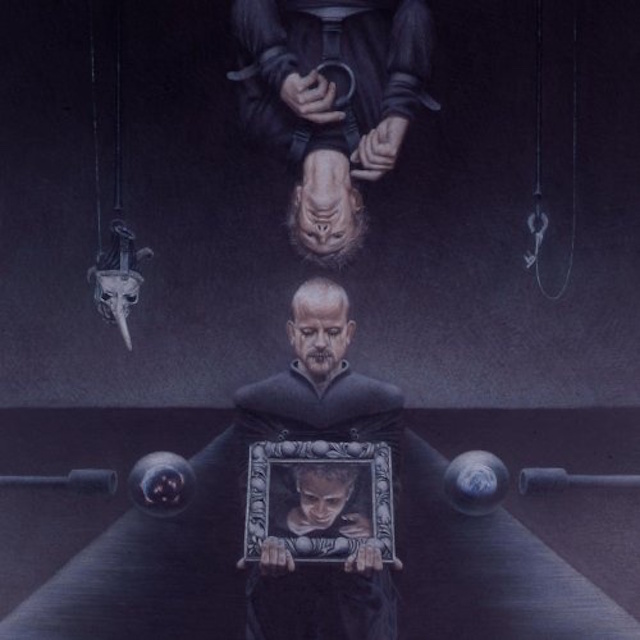
With Monumension, we began working with Truls Espedal, a Norwegian painter. As a consequence of the Photoshop cover for the prior album, we had people saying that our album art should match such cohesive and involved music. We'd had some good covers before that, but they were very different, to the point where they're disconnected. We were introduced to Truls and we knew we couldn't keep doing the album art that way. He's the guy we've worked with since.There was another aesthetic change on this record. It's the first with complete English lyrics.
There were some songs with English here and there before, but on this record, it was all in English. When we began, we only had an aesthetic outlook towards lyrics. On the earlier stuff, there's a lot of Old Norse, Icelandic, and Norwegian. As we toured, we started to meet people who had been reading translations of the lyrics and they had emotional ties to the songs. People came up and had their own interpretations. We realized that these people experienced music the same way we would when we listened to old Genesis, Pink Floyd, or Mayhem. We'd sit there with our vinyl and headphones on reading the lyrics. You can have a mellow or innocent looking piece of poetry being delivered with a sinister piece of music and it turns it around like a David Lynch movie. We thought that if people who listen to Enslaved cannot experience it in synchronicity, then maybe we aren't doing what we wanted. With thematic changes to remove specific mythological themes and making it more about your own outlook on the world, it became an advantage to use English.
Advertisement
10. Vikingligr Veldi (1994)
He spoke a little bit. He had a particularly keen interest in traveling there. He's got a good ear for language. At the time, the bassist of Old Funeral was an Icelandic citizen who moved to Norway, but still spoke Icelandic primarily. Grutle wrote lyrics in Norwegian and they worked together to put it into Icelandic, with a bit of help on the pronunciations and quirks of the language.You were 15 and this was your first record. What was the process like with this early work?
It was an amazing experience. There was so much anticipation and enthusiasm. We felt like nothing could stop us. We were pretty good with the planning. We realized, coming from the demo stage, how much it mattered to be prepared. It started a good trend for us. We had a lot of internal pressure to excel and little external pressure since we hadn't had an album out yet.Vikingligr Veldi was finally released on vinyl just a few weeks ago. What inspired this after all this time?
We made the decision a long time ago, but it's our most complicated release to date because we signed contracts with a label that didn't even exist anymore. Rights were drawn to another label that we'd never had anything to do with. We received our money and everything's fine, but we wanted to make some vinyl of it. We had fans coming to get other records signed but never that record.
Advertisement
9. Frost (1994)
Recordings were approximately a year from each other. Vikingligr Veldi was recorded in the second half of 1993 but there were complications and they got released closer to each other. There was quite a bit of space between the song-writing of the two albums.1994 was a big year for you guys and for black metal in general. What was it like releasing a second record in such a short time and how did the community react?
There was anticipation because we signed with Osmose Records that year. We didn't really have an international perspective though. We knew people liked the first album but we didn't realize how far out the reach was. After we saw Osmose releasing things and people reacting, we felt this positive sort of shock, though. We realized people were listening and it was huge. We started getting offers for tours in late 1994 and early 1995. It's one of those things where you don't see it happening but it's growing as it's being released. Now it's the opposite. Everybody has this goal of sales with each record and everything needs to be planned out. With Frost, we had no idea what was going on and everything was a positive surprise.
8. Eld (1997)
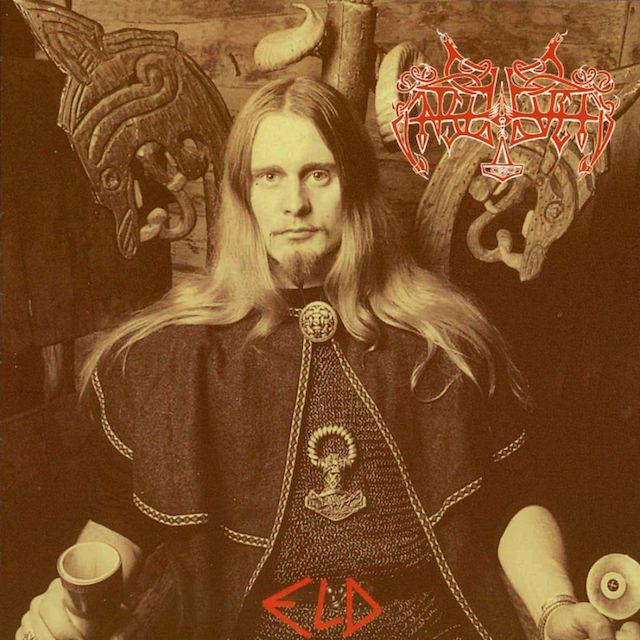
It was our first encounter with reality, in a sense. Everything before Eld was learning stuff and being surprised by how well it went. At this point, we had to keep working, but we had differences in opinion about how to move on further as a three-piece. Trym was trying to continue with the traditional Norwegian black metal sound from Frost whereas Grutle and I wanted to incorporate more of the clean vocals and to experiment with keys. It seemed like a little thing, but it made it harder for us so we encouraged him to move on. After a week, Emperor called us and asked if it would be rude to ask Trym to join so immediately and we said "no, that's super." It was a good career move for him.And for you. There was more heavy metal influence in Eld. You could tell the band was having fun.
Absolutely, but it was a rough time finding a good drummer for it. A lot of the guys in the extreme metal scene didn't really get that we liked stuff like Judas Priest and that we still wanted to play extreme. A lot of rock drummers didn't see the point in doing blast-beats and stuff like that, so it took about a year and a half to find a guy who understood what we wanted to do.
Advertisement
7. Ruun (2006)
It was a new experience. We really learned more about each other as musicians, which was extremely new. It was a fantastic thing as a songwriter to know the other musicians a lot better than I had before. I had more of an idea of what we could do with the songs being written in the right way. It was the second album with the lineup that we have today. Instead of it feeling like me and Grutle having a drummer who we were trying to coax and coach into our way of thinking, we had three guys who were more or less ahead of us at our own game. Now we weren't looking for what to do so much as how to maximize the potential of the band. The only thing I could say about the album that could've been done better is that it was written as a touring band and we weren't given enough peace and quiet. We had to fit it in between tours, but it was an album that proved to us that we could go new directions with this lineup and its new energy.What does the song title "Api-Vat" mean to you?
Api-Vat is Sanskrit, an ancient Indian language. It means "the father." As I understand it, more of the father as an archetype. It was around the time where we became more interested in the connections between different mythologies and belief systems. The interest became more global and universal.
Advertisement
6. Riitiir (2012)
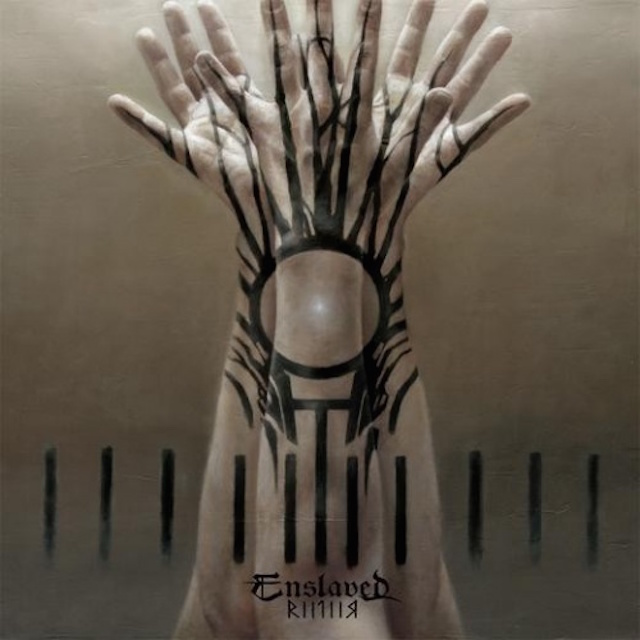
Yeah, what a perfect segue. It's what became of that idea, taken a lot further. Riitiir is a concept album that Grutle and I developed together, looking at humans as a ritualistic being and how it's connected through different archetypes and symbols in all these pre-monotheistic systems. It's a widening of the perspective for us, having delved into Old Norse views for so long. It felt natural to lift the gates a bit and look at the human psyche on a broader level and not just through our own history.Riitiir was written as you were expecting your first child. How did that color your experience?
It altered the experience more than anything else throughout the years. It's a cliché that everything changes when a child is born, but it really did. As with the album's theme, it was a broadening of my own horizon to have a child. All of a sudden things are irrefutably not just about you anymore. You can always get a hobby or commit to a religion and backtrack and say, "Oh, this wasn't for me." With a child being born, everything is sort of just chiseled out. It could be regarded as a stressful event, where things aren't like they were before. For me it had the opposite effect. It felt positive to have something so solid and concrete as the love and connection I feel for my child. The whole "monkey understands that things are vast" experience was a grounding feeling for me. I recognized that it's the opposite of being a band. Things might change and line-ups change but family is eternal.
Advertisement
5. Vertebrae (2008)
Absolutely. Possibly why it might be regarded as underrated, from time to time, is exactly that. It's quite mellow. The production is quite down to earth. It was mixed by Joe Barresi. We booked a legendary analog studio in Norway, but since he was used to mixing in the top studios in Los Angeles and New York, he wanted equipment that they may have had, but it hadn't been used or checked in years. A lot of the time and energy went into putting out fires. We had to drive to the nearest city picking up parts, but he kept us quiet. Still, there was no challenge that ever made him wince. The result was just fantastic and he made us change our production philosophy. He told us, "Guys, the way you sound onstage is massive, like a wall of sound. It's how you should sound in the studio. Not necessarily in an aggressive way, but it should be big." To do that, we did what we'd done in our earlier years. We'd record one guitar and put it in the left side and another guitar in the right side. We reproduced the stage sound on the album and it was great. That's when we started to aim for an authentic sound again. Not only because of the songs on the album, but because the creation was such a learning experience for us.
4. Axioma Ethica Odini (2010)
This album was such a big injection of energy for us, especially with the response from critics and strong sales. The album came on the heels of our 2009 tour with Opeth, which introduced us to a lot of new people who discovered we might actually be something other than what they thought and it was good for us. It was a fresh, energetic album and it presented us to people in a little bit of a new way.
Advertisement
It was a consolidation of what we had. There was the newfound direction from Isa upwards combined with recording philosophy we learned from Joe combined with the live experiences from our tours and a vision of what's to come. All those things came together to make an album that was both extremely easy to write and record. The songs from Axioma are often some of our favorites to play live.After your experience with Joe Barresi, you mixed the album in a professional studio but did the production yourselves at home.
We took what we learned and worked with it ourselves. It was an easy little flip of the switch. We met him and he's produced Tool and all these huge bands. We're sitting down and he's buying us blueberry pancakes in Los Angeles and he set things out in a way that was simple and we knew it all along so we did it ourselves.
3. Isa (2004)
Isa was your first record with the current lineup.
What happened with the change in lineup and everything was that the band rediscovered our strengths. We felt we came back to where we were when we made Frost. We felt no pressure. We had a new lineup and a new label. These guys were amazing at translating our ideas and they got that we wanted to develop Enslaved as what it is. We didn't care much about anything other than making the best possible album. It was lots of fun to record.Isa was the first record of yours to receive a Norwegian Grammy. How did that impact you?
It was fun, but we'd already come to the point where we knew what we stood for. Still, it was exciting because in Norway the mainstream media has its ears open to this kind of music. It was almost psychedelic to experience how people reacted. People seeing us for what we were was a great recognition. It sounds cynical, but it matters a lot especially when trying to get a working visa for the United States, since you guys are so into Grammy awards. It was more of a pat on the back than a firm shove, but it felt good.
We took what we learned and worked with it ourselves. It was an easy little flip of the switch. We met him and he's produced Tool and all these huge bands. We're sitting down and he's buying us blueberry pancakes in Los Angeles and he set things out in a way that was simple and we knew it all along so we did it ourselves.
3. Isa (2004)
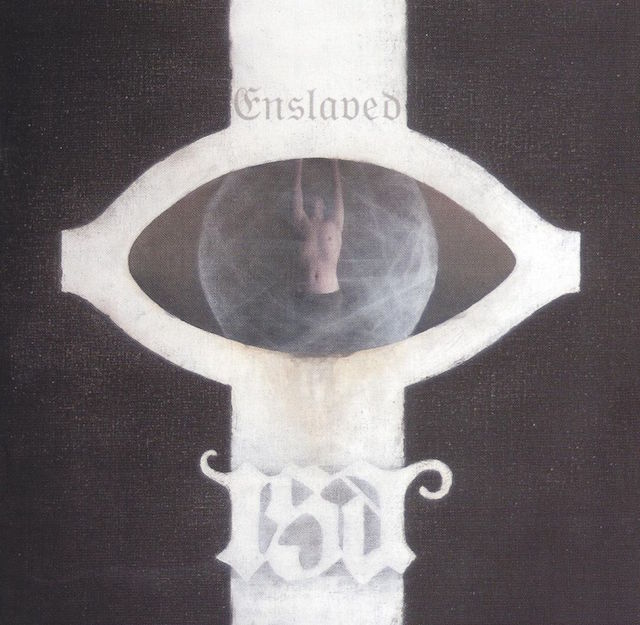
What happened with the change in lineup and everything was that the band rediscovered our strengths. We felt we came back to where we were when we made Frost. We felt no pressure. We had a new lineup and a new label. These guys were amazing at translating our ideas and they got that we wanted to develop Enslaved as what it is. We didn't care much about anything other than making the best possible album. It was lots of fun to record.Isa was the first record of yours to receive a Norwegian Grammy. How did that impact you?
It was fun, but we'd already come to the point where we knew what we stood for. Still, it was exciting because in Norway the mainstream media has its ears open to this kind of music. It was almost psychedelic to experience how people reacted. People seeing us for what we were was a great recognition. It sounds cynical, but it matters a lot especially when trying to get a working visa for the United States, since you guys are so into Grammy awards. It was more of a pat on the back than a firm shove, but it felt good.
Advertisement
After Below the Lights, this felt like a surprisingly urgent and forceful album.
There's a lot of spirituality on Below the Lights but with Isa there was so much new energy. We recorded things a bit more live in the studio. We left more room for spontaneity. I guess "urgency" is a good word. Things were finally together and we were ready to do what had to be done.
2. Below the Lights (2003)
What made this stand the test of time in a way few others have?
I think there are so many things about this. It's from a special time in our lives. It's the transition from mid-era Enslaved into newer Enslaved. When we recorded Below the Lights, we lost two members. We were pretty much back to the root of things and getting people to help us out. For a few weeks I was playing the drums because I didn't feel we had the time to just sit down and wait for a drummer to show up. We had to keep going because there was so much energy. It's an album that symbolizes so much that things can be hard but it's how you handle it that counts. When life gives you lemons, you make gin and tonic.Both in the music and cover art, there's this hidden world just out of sight that you're glancing towards but never fully revealing.
It's something we hinted at with Mardraum – Beyond the Within. Here we explored it fully, that sense of dreams and the unknown. We started tapping into these various systems of accessing the potential of the human mind. We wanted to explore the ways we as humans categorize and label these thoughts and experiences that are outside the everyday spectrum.You did things on Below the Lights that you hadn't before. There's a choir on "Havenless" and flute on "Queen of Night." What inspired these and why haven't you incorporated them more since?
We really like those elements and we keep talking about how we really want to bring back the flute. We're really close to getting a saxophone on our next album. There are so many things that we want to do and Below the Lights opened up so many things. We had this sense that we could do anything we wanted. Our only mission statement became to have a great time making music.
1. In Times (2015)
In Times feels like a culmination of Enslaved's many eras. There's a sense of triumph and confidence.
It was the first time where we felt that we've had many smaller interconnected stories. This was the first time where we had a vast enough body of work to take all of our records and examine them and learn from the different experiments.You revisited familiar themes in new ways on songs like "One Thousand Years of Rain."
We sort of built new things with old materials. I really felt that was what we were doing there with that song and that collaboration (with Einar Selvik of Wardruna). We got over our fear of looking like we're going backwards and became excited about doing new things with old thoughts.Part of In Times was recorded in the woods south of Bergen?
When the album was recorded, we tried to analyze what it was that we enjoyed about the old days and what brought out the creativity. We realized that we missed the sense of direct connection. When you want to create art that reflects nature and has this epic and atmospheric feeling, you need to recreate a setting that suits it. Grutle has a cabin in the woods, so we drove out there to set up a studio. Inspiration came like in the days when we'd have a million ideas. We ran rampant in the woods with a recorder. We found some old farm equipment rusting away and found some rocks and just threw them and recorded from different angles. It made excellent percussion.The playfulness and joy shine through, especially on "Daylight," which creates such a sense of peaceful closure to the record.
After we wrote the first songs, we were just waiting for the ending to appear. It was around the time my second daughter was born when I started writing. Everything came together with "Daylight" and it was so cyclical. We didn't check the length of the album until after that song was finished. On earlier albums, we checked the length as we went. On this album, we wanted it to be natural and to have the album finished when it felt finished. It was an affirmation of our instinct.
There's a lot of spirituality on Below the Lights but with Isa there was so much new energy. We recorded things a bit more live in the studio. We left more room for spontaneity. I guess "urgency" is a good word. Things were finally together and we were ready to do what had to be done.
2. Below the Lights (2003)
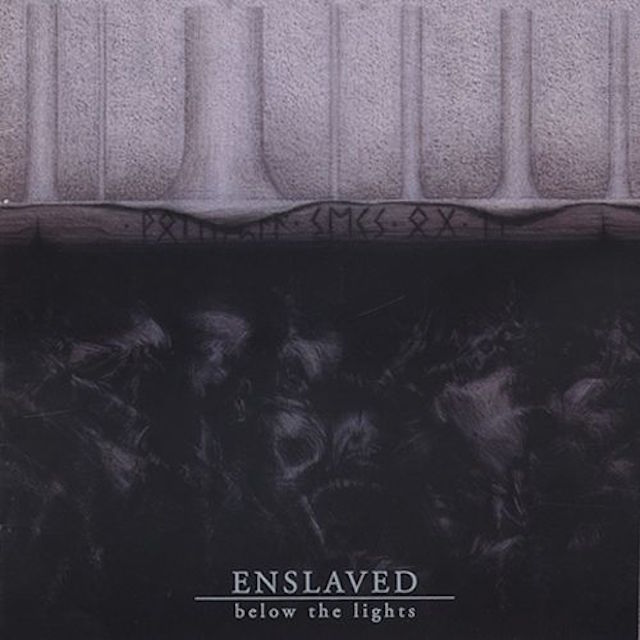
I think there are so many things about this. It's from a special time in our lives. It's the transition from mid-era Enslaved into newer Enslaved. When we recorded Below the Lights, we lost two members. We were pretty much back to the root of things and getting people to help us out. For a few weeks I was playing the drums because I didn't feel we had the time to just sit down and wait for a drummer to show up. We had to keep going because there was so much energy. It's an album that symbolizes so much that things can be hard but it's how you handle it that counts. When life gives you lemons, you make gin and tonic.Both in the music and cover art, there's this hidden world just out of sight that you're glancing towards but never fully revealing.
It's something we hinted at with Mardraum – Beyond the Within. Here we explored it fully, that sense of dreams and the unknown. We started tapping into these various systems of accessing the potential of the human mind. We wanted to explore the ways we as humans categorize and label these thoughts and experiences that are outside the everyday spectrum.You did things on Below the Lights that you hadn't before. There's a choir on "Havenless" and flute on "Queen of Night." What inspired these and why haven't you incorporated them more since?
We really like those elements and we keep talking about how we really want to bring back the flute. We're really close to getting a saxophone on our next album. There are so many things that we want to do and Below the Lights opened up so many things. We had this sense that we could do anything we wanted. Our only mission statement became to have a great time making music.
1. In Times (2015)
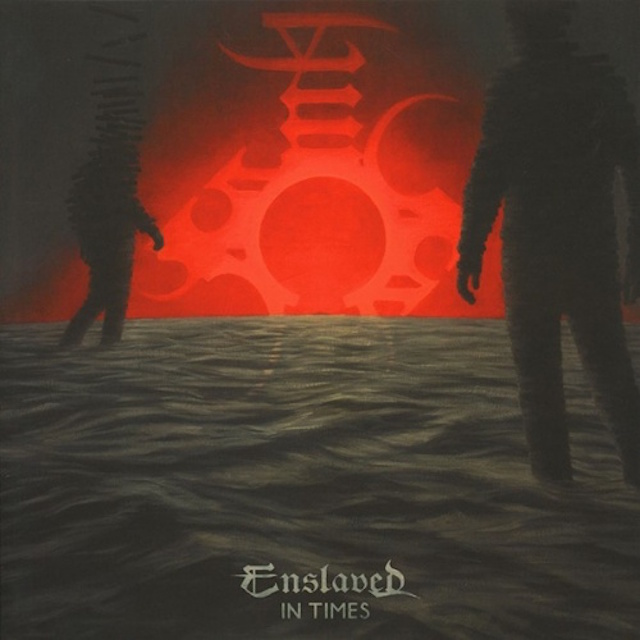
It was the first time where we felt that we've had many smaller interconnected stories. This was the first time where we had a vast enough body of work to take all of our records and examine them and learn from the different experiments.You revisited familiar themes in new ways on songs like "One Thousand Years of Rain."
We sort of built new things with old materials. I really felt that was what we were doing there with that song and that collaboration (with Einar Selvik of Wardruna). We got over our fear of looking like we're going backwards and became excited about doing new things with old thoughts.Part of In Times was recorded in the woods south of Bergen?
When the album was recorded, we tried to analyze what it was that we enjoyed about the old days and what brought out the creativity. We realized that we missed the sense of direct connection. When you want to create art that reflects nature and has this epic and atmospheric feeling, you need to recreate a setting that suits it. Grutle has a cabin in the woods, so we drove out there to set up a studio. Inspiration came like in the days when we'd have a million ideas. We ran rampant in the woods with a recorder. We found some old farm equipment rusting away and found some rocks and just threw them and recorded from different angles. It made excellent percussion.The playfulness and joy shine through, especially on "Daylight," which creates such a sense of peaceful closure to the record.
After we wrote the first songs, we were just waiting for the ending to appear. It was around the time my second daughter was born when I started writing. Everything came together with "Daylight" and it was so cyclical. We didn't check the length of the album until after that song was finished. On earlier albums, we checked the length as we went. On this album, we wanted it to be natural and to have the album finished when it felt finished. It was an affirmation of our instinct.